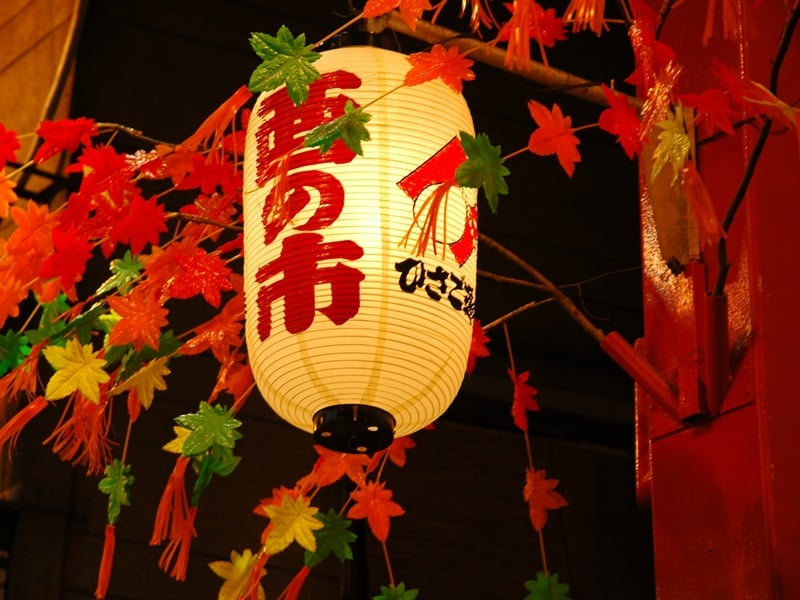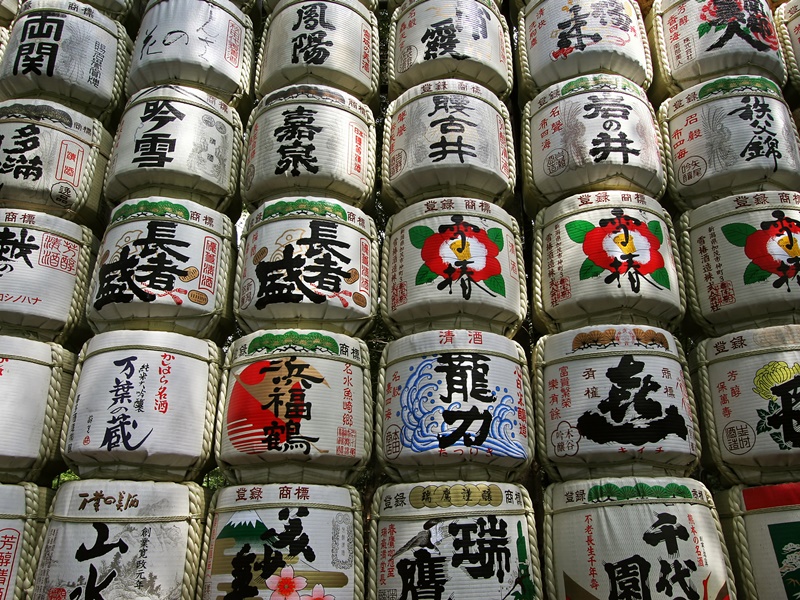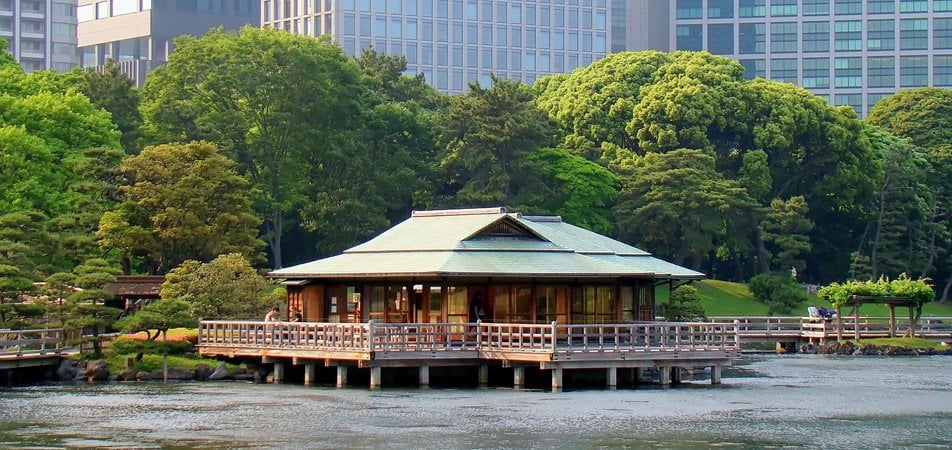Travel through the land of the rising sun and visit cities like Tokyo, Kyoto, Hiroshima and Osaka. Learn about the country’s rich culture and see the different temples and shrines. Taste the best of culinary Japan and visit important historical castles from the feudal era Japan is famous for.
Itinerary
📍 Narita International Airport (NRT) to Central Tokyo: 1.5 hours Haneda International Airport (HND) to Central Tokyo: 50 minutes
Upon arrival to Tokyo’s airport, our representative will be waiting to assist with transportation into the city (either boarding the right train or finding the appropriate shuttle bus). The remainder of the day is free at leisure.
Overnight in Tokyo
Inclusions:
📍 Start (guided tour): 09:00 Duration: 8 h *including pick-up/drop-off and transit times
Meet up with the guide this morning in the hotel for the trip to Meiji Jingu, Tokyo’s most iconic Shinto shrine steeped in history and spirituality. Pass through the impressive torii gates leading to the shrine's inner forest of over 100,000 trees. Whether witnessing a traditional Shinto wedding procession or strolling through the lush grounds, Meiji Jingu provides an unforgettable experience of nature in the centre of Tokyo’s urban landscape.
Move on to the nearby districts of Harajuku and Omotesando, vibrant neighbourhoods that offer a unique and eclectic experience. Harajuku, renowned for its quirky street fashion, showcases an array of avant-garde boutiques and shops that cater to various subcultures. Omotesando, often dubbed Tokyo's "Champs-Élysées," presents a sharp contrast with its upscale, sophisticated atmosphere.
After lunch, use public transport to reach the beautiful Koishikawa Korakuen Garden, a traditional landscape that serves as an excellent example of Japanese garden design.
The final destination of the day is Asakusa. This charming district exudes a nostalgic charm and showcases
Tokyo's traditional side. At the heart of Asakusa stands the iconic Senso-ji, Japan's oldest Buddhist temple, drawing hordes of locals and tourists alike seeking blessings and cultural insight. The vibrant Nakamise Street leading to the temple offers a bustling market with a myriad of stalls selling traditional snacks, souvenirs, and handicrafts.
After a full day of touring the city, return to the hotel with the guide or part ways and continue exploring the city independently.
Note: The order of this itinerary may change depending on the location of your hotel.
Overnight in Tokyo
Inclusions:
☕ Breakfast
📍 JR Tokyo Station to JR Kamakura Station: 50 min
Today is a self-guided day.
Suggested Self-Guided Itinerary:
Enjoy the rest of the day exploring this amazing city. Make an early start to visit the electronics district of Akihabara or discover Tokyo’s world-class museums and art galleries.
Alternatively, take an excursion in Kamakura. One of Japan’s former capitals, Kamakura is a delightful seaside town home to many ancient shrines, temples, and other structures like the Daibutsu, a giant bronze Buddha that stands at 13-meter tall.
Optional Tour (1): Cool Tokyo Cycling Tour
Today’s tour starts at 9:00 or 14:00. Meet the guide, who is sometimes ac companied by his adorable dog “Jack-san,” at Sasazuka Station, and head together to the cycling studio for a bicycle and helmet fitting. On the way, listen to some fascinating insights and entertaining anecdotes about the local neighbourhood, and get some useful explanations from the guide about Tokyo’s cycling etiquette and today’s itinerary.
When everything is ready, depart for today’s cycling tour. Leave Sasazuka with the guide, and cycle to the first location, enjoying the best of Tokyo’s urban design and natural environment on the way. Depending on the season, enjoy the surrounding foliage, which is especially beautiful in the spring when the plum and cherry blossoms bloom, and in the autumn, when the trees are a blaze of colour. There will be several cultural and architectural design stops along the way, where the guide will share interesting information and allow some time for photos.
Bike through Tokyo’s backstreets, local shotengai (small commercial streets) in hip neighbourhoods such as Shimo-Kitazawa, and some little-known parks, seeing the guide’s favourite areas and shops, and stopping for a break at a charming café.
Finally, enjoy the ride back to Sasazuka where the bicycles will be returned to the guide.
Time
Start: 9:00, 14:00.
Duration: 3 h to 4 h
Journey: 10 km (mostly cycling, a bit of walking and light sightseeing also involved).
Overnight in Tokyo
Inclusions:
☕ Breakfast
📍 Tokyo Station to Hakone-Yumoto Station: 1 h
Today is a self-guided day.
Travel by train to Hakone, a popular hot spring destination from Tokyo frequented by most tourists who wish to get a sight of Mt. Fuji.
Suggested Self-Guide Itinerary:
Spend the whole day exploring Hakone with the included transport pass, which serves as a ticket to the numerous forms of transportation in the area.
Ride the Hakone Tozan switchback train that zigzags through the mountains and offers views of the surrounding valleys. Afterwards, ride the Guinness World Record-holder ropeway all the way up to Mt. Owakudani, passing over sulfurous fumes and hot springs.
From the mountain, take the ropeway bound for Togendai and ride the replica pirate ship that cruises along Ashinoko, a body of water that was formed after a volcanic eruption that occurred more than 3,000 years ago.
Hakone is also home to many museums and parks. One of these is the Hakone Open Air Museum. The museum is famous for its harmonic balance between nature and art, featuring a sizable Picasso Collection.
Note: The ropeway that goes to Mt. Owakudani has resumed operations but for safety reasons, hiking on the mountain is still prohibited.
Suggested Alternative Itinerary:
Begin by heading towards Togendai to board the aforementioned pirate ship, crossing the volcanically formed Ashinoko lake.
Disembark at Hakone-machi and walk towards Hakone Shrine, the most photographed spot in Hakone for its iconic “floating” torii gate. From the shrine, continue to trek along the Preserved Old Tokaido Walking Trail, of which the most popular track stretches around 8 km long. The next 40 minutes heads towards Amazake Chaya, a traditional house serving Japanese-style snacks accompanied by sweet rice wine (amazake).
In Hakone, experience a stay in a ryokan, a classic Japanese-style accommodation furnished with futon beds, tatami flooring, paper sliding doors, and hot spring baths.
Enjoy a traditional multi-course meal for dinner, which usually includes small servings of sushi, sashimi, and tempura.
Overnight in Hakone
Inclusions:
☕ Breakfast, 🍗 Dinner
📍 Hakone-Yumoto Station to Kyoto Station: 2.5 hours
Today is a self-guided day.
Take one last soak in the onsen before getting on the bullet train to Kyoto, the reigning cultural capital of Japan, home to 2,000 shrines and temples with 17 UNESCO World Heritage Sites.
The rest of the day is at leisure.
Overnight in Kyoto
Inclusions:
☕ Breakfast
📍 Start (guided tour): 09:00 Duration: 8 h *including pick-up/drop-off and transit times
Today’s tour starts with a visit to one of Kyoto’s most iconic sites: the Fushimi Inari Shinto Shrine. A lavishly decorated building houses the goddess of rice, and thousands of orange torii gates stretch up the mountainside in long tunnels. Unlike any other shrine in Japan, this is an ideal spot to understand how Shintoism is tied to respect for nature.
Board a train to Sanjusangendo, a stunning Buddhist temple often overlooked by tourists. A mesmerizing display of 1001 life-sized golden Buddhist statues awaits inside the world’s longest wooden building, sure to be one of the most memorable sights of the entire trip.
Take a taxi to the entrance of Nishiki Market, a long covered street of shops and stalls often called “Kyoto’s kitchen.” From traditional to sellers of tofu, fish, and pickles to shops showcasing knives and handicrafts, there is a tantalizing amount of things to see and taste here.
Don’t get too full snacking in the market, as lunch is next at a nearby restaurant. The guide will suggest locations based on the guests’ preferences (guests should notify guide of dietary restrictions at the start of the tour).
After lunch, travel to Nijo Castle, an ornamental palace built for the shogun in the early 1600s. The beautiful building is known for its finely painted walls and “chirping nightingale” floors that squeak under the feet of intruders. Walk the halls, see the audience chambers, and experience what it was like to visit the military ruler of Japan in the classic era of samurai.
Hop aboard the subway for a short ride to the eastern foothills of Kyoto. The final location of today is Nanzenji Zen Temple, a quiet retreat where monks have lived in peaceful repose since 1291. See the famous Zen rock garden whose meaning is left up to the viewer. Is it meant to be islands in a calm ocean, or a depiction of wild animals crossing a raging river?
After a full day of sightseeing, part ways with the guide and return to the hotel or continue to explore independently.
Overnight in Kyoto
Inclusions:
☕ Breakfast
📍 Start (cultural activity): 9:30 Duration: 2 hours Kyoto Station to Nara Station: 45 minutes
Today, be immersed in Japanese culture with this insightful half day trip in Kyoto. Start with a visit to a machiya, a traditional wooden townhouse found throughout Kyoto. Take a tour of the beautifully restored house, learning about its architecture and history.
Then slip into a kimono, the iconic traditional Japanese garment. These full-length robes are worn by all Japanese when attending important events or formal occasions. Once appropriately dressed, meet with a local tea master for a traditional ceremony. Watch and learn as the master brews and services tea using slow, deliberate movements steeped in spirituality and ritual. Enjoy a cup of the bitter tea along with traditional sweet treats.
After the tea is finished, continue the cultural exploration of Kyoto. Experience an introductory course in origami, the Japanese art of paper folding. Under the guidance of a local artist, learn the secrets behind creating beautiful decorations and images with simple pieces of paper.
Wrap up the half day trip in Kyoto with new insights and a better understanding of Japanese culture. Return to the hotel or continue to explore Kyoto’s charming streets.
Suggested Self-Guide Itinerary:
In the afternoon, head out of town and travel to Nara with the included Japan Rail Pass. For 74 years during the 8th century, Nara was Japan’s capital and many of the temples and shrines built at that time still remain.
Nara is just a small town, with most of its main tourist spots located around Nara Park, where a large amount of tame deer roam free. Visit Todaiji Temple, the world’s largest wooden building housing Japan’s largest Buddha, or Kasuga Taisha, Nara’s most celebrated shrine.
Overnight in Kyoto
Inclusions:
☕ Breakfast
📍 Kyoto Station to Hiroshima Station: 2 hours and 15 minutes
The morning is free at leisure until the departure for the historical city of Hiroshima. While on board the bullet train, keep an eye out for Himeji Castle, also known as the ‘White Egret Castle’, and the Seto Ohashi Bridge, the longest two-tiered suspension bridge in the world that stretches 13 kilometers long and links Honshu to Shikoku.
Optional Evening Food Tour:
Tonight’s tour begins at 18:30. Meet the guide and stroll the shotengai shopping street where locals do their everyday shopping. Stop into a market and examine fresh ingredients, picking up some knowledge about the basics of Japanese cooking.
Proceed to the first restaurant: a tachinomi, or standing bar where dining is mixed with socializing with locals. The guide will assist with ordering multiple small dishes of local versions of favourites. Drinks are included as well, giving guests a chance to try a few varieties of local sake.
Continue the evening with strolls between dishes at three lively restaurants, where you can expect a few surprises on the menu. Everyone knows that Hiroshima is famous for okonomiyaki pancakes, but expect to go a bit deeper into local cuisine on this tour!
Finish with an eye-opening walk through Hiroshima’s main entertainment district and see the wild side of the city. The guide knows all the ins and outs of how residents here like to unwind after work, and can share information that isn’t found in the guidebooks.
Part ways with the guide and continue exploring the nightlife independently or return to the hotel.
Overnight in Hiroshima
Inclusions:
☕ Breakfast
📍 Start (guided tour): 09:00 Duration: 8 h *including pick-up/drop-off and transit times
From mainland Hiroshima, a short ferry ride leads to Miyajima, a small sacred island located in the Seto Inland Sea. Explore the island and sample some local delicacies like oysters, saltwater eel, and maple leaf-shaped cakes.
Start with Itsukushima Shrine, declared as one of Japan’s three most beautiful views. The shrine is designed in a pier-like structure and dates back to the 6th century. Its huge vermillion o-torii gate seems to be floating in the water during high tide.
Walk towards the mountain to visit Daisho-in, the most visited Buddhist temple on the island. Along the stairs is a row of spinning sutras that lead up to the main hall. It is believed that anyone who spins these sutras will be blessed.
Early in the afternoon head back to Hiroshima to visit Peace Memorial Park and Museum. There is also the heart-rending A-Bomb Dome and the Children’s Peace Monument.
Overnight in Hiroshima
Inclusions:
☕ Breakfast
📍 Hiroshima Station to Shin-Osaka Station: 1.5 h Time Start: 16:45 Duration: approx. 3.5 h
The morning is free at leisure before boarding the bullet train to Osaka.
After checking into the hotel, start exploring the lively streets of Osaka, Japan’s culinary capital. Osaka’s flamboyance, fun-loving people, and amazing food make up for what it lacks in tourist attractions.
Today’s tour begins at 16:45. Osaka is an epicurean’s delight. Indeed, the motto that the city’s exuberant inhabitants live by is kuiadore– “to eat oneself bankrupt.”
The first stop will be at a street food stall to get a taste of some traditional Japanese snack food, menchi katsu. Menchi katsu is a breaded and deep-fried patty made of ground meat. Golden and crisp, this is a local favourite.
Next, head to a standing bar to enjoy the ambience and taste a selection of sake and Japanese wine, along with delicious house specialties. Then, head to a restaurant specialising in wagyu beef dishes. Often referred to as the most expensive beef in the world, wagyu beef is of a superb quality, and is on many a gourmet’s wish list. Enjoy the melt-in-the-mouth textures with a refreshing cocktail.
After walking around the atmospheric backstreets, the final stop will be a small teppanyaki restaurant to try some delicious gyoza and negiyaki cooked on a metal plate right in front of guests.
Bid farewell to the affable guide, and either return to the hotel or go for a stroll around the neighbourhood to take in the sights.
Inclusions:
☕ Breakfast, 🍗 Dinner
📍 Namba Station to Kansai Airport: 45 minutes
The rest of the day is at leisure until the scheduled transfer by train to Kansai International Airport.
Inclusions:
☕ Breakfast
You might also like...
Here is a selection of products that may also fit the needs of your client.
Become a partner-
You might also like...
Here is a selection of products that may also fit the needs of your client.
Become a partner -
-
-
Get in touch
Our sales team is on hand to ensure that the process of working with us is as smooth as possible. If you should have any questions, feel free to reach out to them.
















